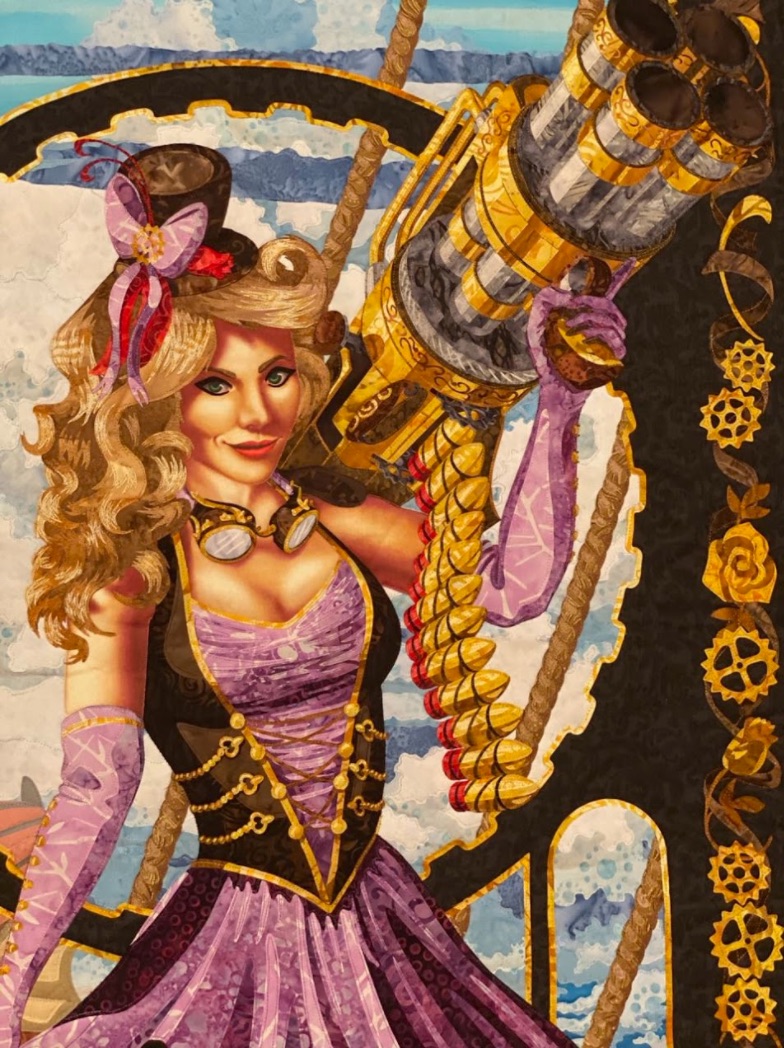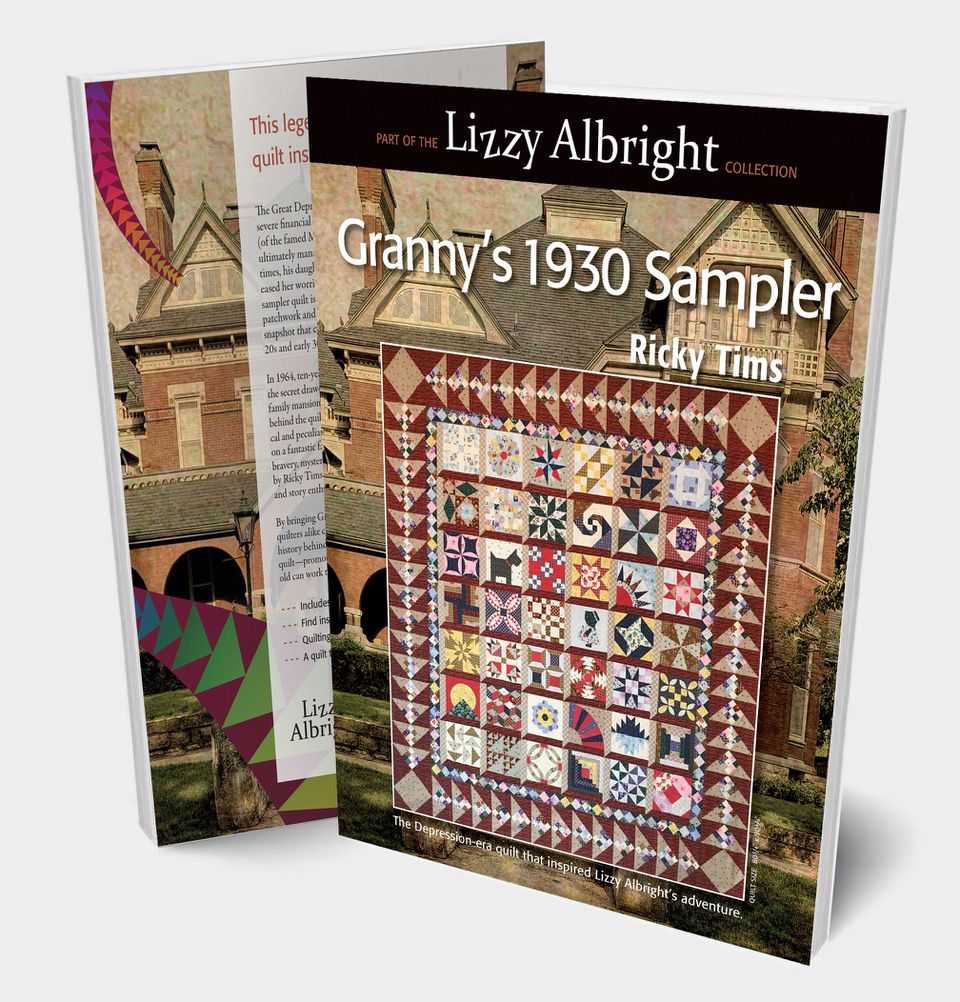 3
3

Three Easy Steps To Save This Lesson As A Pdf:
-Make sure you are logged in.
-Click on the small triangle next to the tool wheel in the upper right hand corner of the page (you'll find it above the Like button).
-Select the pdf. option. Wait a few minutes. It's a large file due to the number of images.
-Your file should appear with the title of the lesson.
Quilt Tapestry with Flowers and Baskets by Yoko Saito. (Image courtesy of Priscilla Knoble for Yoko Saito)
As we shared in Lesson 40 and Lesson 41, Unity can be thought of as everyone in a group working together. Unity represents calmness and order through repetition, either by shape or color. While Variety adds that bit of spice to a quilt without sacrificing the idea of the group working together as a whole. Remember...Unity adds harmony; Variety adds interest. Last lesson's focus on variety featured a look at what you as a quilter can do by pushing just one design. But how do these two principles come into play when you work within a very narrow palette? Or, let's use the example of how your guild challenge involves working with only a few selected fabrics. How do you achieve interest and variety?

In Lesson 24 (The Elegance of Taupe) we observed how taupe, which can at first appear to be very monochromatic, can in fact comprise a wide range of colors, textures and prints when used by a master quilter such as Yoko Saito.
Her book, Japanese Taupe Color Theory, dispels the notion that quilts and quilted items are dull and anything but boring. The handbags below are a perfect example of quilted works that keep within a narrow palette of color but still offer unity and variety.


Yoko Saito's Japanese Color Theory: A Study Guide (Image courtesy of Priscilla Knoble for Yoko Saito). Cocoa Cookies and Marshmallow bags by Yoko Saito. (Images courtesy of Priscilla Knoble for Yoko Saito).
Priscilla Knoble (Show 1505) has used her fluency in Japanese and quilting knowledge to share the world of Japanese quilting books with those desiring to make their own pieces. Her understanding of the Japanese esthetic and quilting techniques are a huge aid for those desiring to gain an understanding of the Japanese form of quilting. Priscilla shares Yoko Saito's method for repeating elements to create both unity and variety in the design of a quilt.

Floral Wonder by Yoko Saito. (Image courtesy of Priscilla Knoble for Yoko Saito).
Unity/Variety
by Priscilla Knoble
(Show 1505)
Many traditional quilts use the concept of unity by creating multiples of the same block within a quilt. Sometimes with these quilts, variety is found by using the same quilt blocks, but making them out of a variety of fabrics. Other times you will see a quilt, such as a Baltimore album, where each block is somewhat different, but still has rules of how it belongs within the whole.
If you’ve been to any quilt shows and seen quilts in the exhibitions from Japanese quilters, you will likely not be surprised that patchwork and quilting is an extremely large market in Japan. Although the introduction of this craft to the Japanese was primarily due to the influence of the quilting history in America, as with many things, they have added their own aesthetic and style to much of their work.
Yoko Saito, a celebrated artist known for her unique and intricate designs, is a master of using unity and variety within her quilts and in such a way that is fairly unique to the aesthetic that you often see coming out of Japan.

Ms. Saito loves houses and has written several books and patterns using them as the key design motif. In the Chatter of Houses (Houses, Houses, Houses; 2013; Stitch Publications) she has created an amazing quilt where each of the houses or buildings is unique, yet placed in a pleasing layout of center house blocks with two borders chock full of them.
Chatter of Houses by Yoko Saito. (Image courtesy of Priscilla Knoble for Yoko Saito).
 In a completely different vein, in an often seen design arrangement, she will create a quilt that has detailed appliqué on top of a subtle and creative background. In both the Julstjarna Poinsettia and Floral Bouquet (Floral Bouquet; 2015; Stitch Publications) that she designed, you will notice elements that are quintessential Yoko Saito.
In a completely different vein, in an often seen design arrangement, she will create a quilt that has detailed appliqué on top of a subtle and creative background. In both the Julstjarna Poinsettia and Floral Bouquet (Floral Bouquet; 2015; Stitch Publications) that she designed, you will notice elements that are quintessential Yoko Saito.
First observe the background and borders that are often made up of at least two, if not three fabrics that are very close in color/pattern. Rather than making these with square designs, Ms. Saito will use gentle curves and scallops. Next she will tend to cover the seams between the borders and the central background with appliqué. In the case of both of these quilts, she uses intricate floral designs with stems, leaves and flowers where the stems follow the seams, all but making the background fabric transition disappear. To add even more interest and depth to the quilt she will use a subtle variety of monochromatic colors to keep your eyes dancing along the pattern. Note the variety of greens used for the leaves in Floral Bouquet or the greys/blues in Julstjarna Poinsettia.
The next time you see a pattern you would love to make or if you are designing one yourself, take a chapter out of Yoko Saito’s book and try one of her design techniques yourself.
Julstjarna Poinsettia by Yoko Saito. (image courtesy of Priscilla Knoble for Yoko Saito).
In 2017, Ricky had a chance to chat with Yoko Saito during the Houston Quilt Festival. Watch the interview and see more of her work.






















 In a completely different vein, in an often seen design arrangement, she will create a quilt that has detailed appliqué on top of a subtle and creative background. In both the Julstjarna Poinsettia and Floral Bouquet (Floral Bouquet; 2015; Stitch Publications) that she designed, you will notice elements that are quintessential Yoko Saito.
In a completely different vein, in an often seen design arrangement, she will create a quilt that has detailed appliqué on top of a subtle and creative background. In both the Julstjarna Poinsettia and Floral Bouquet (Floral Bouquet; 2015; Stitch Publications) that she designed, you will notice elements that are quintessential Yoko Saito.







.jpg)


